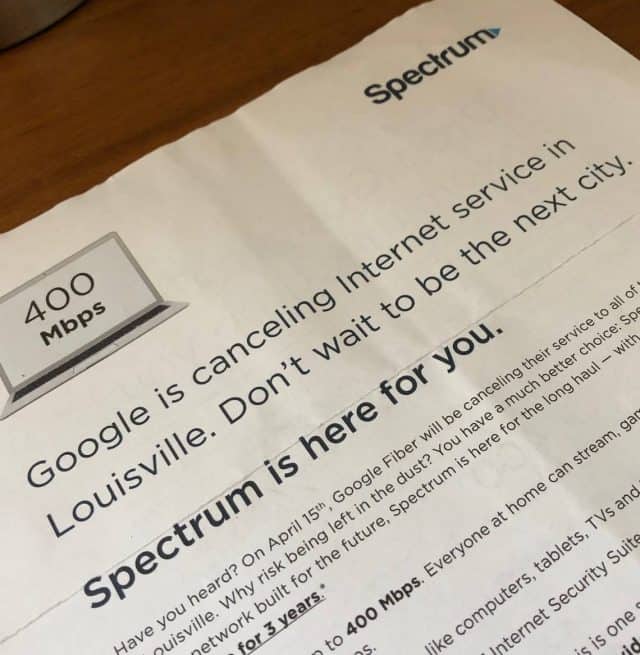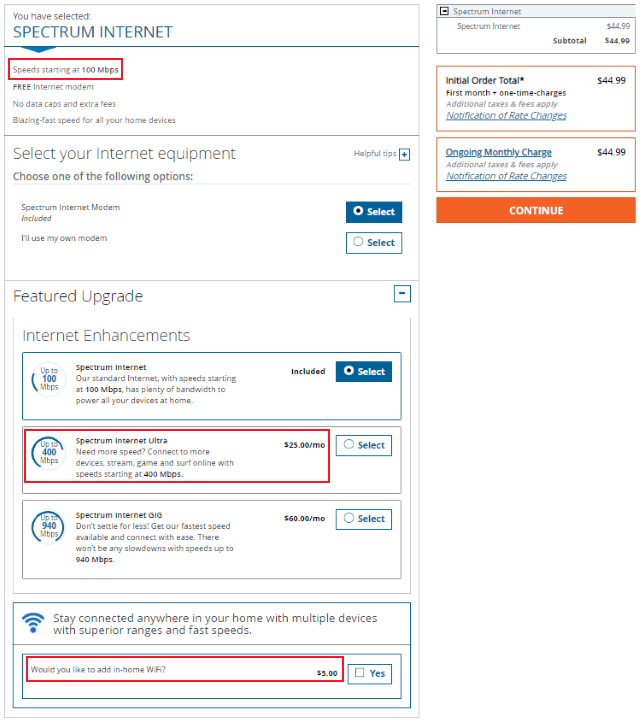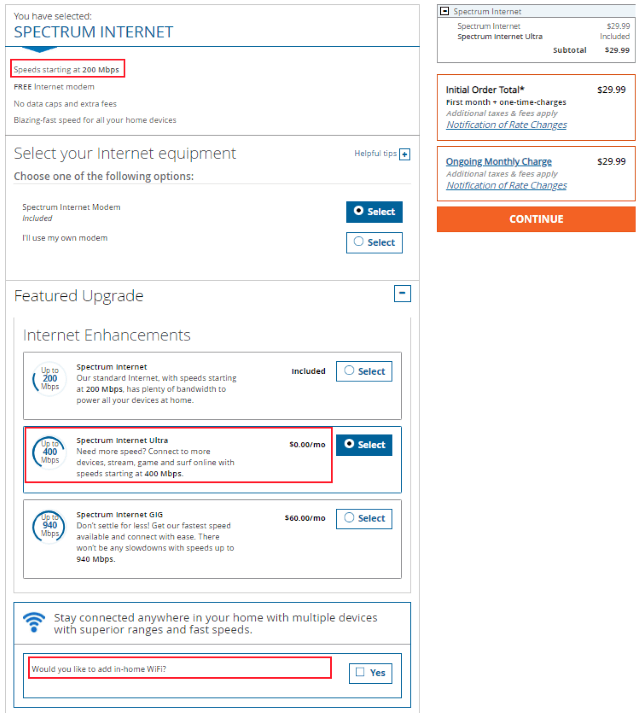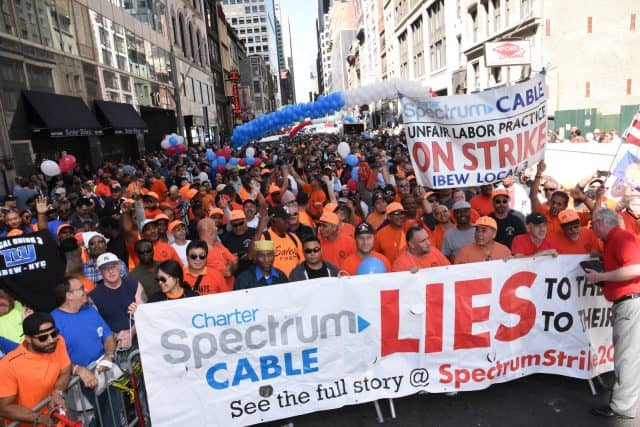Charter Communications is sending letters to consumers in some Google Fiber cities warning that the hotly anticipated fiber to the home provider is “canceling internet service in Louisville — don’t wait to be the next city.”
But no worries, Charter adds. “Spectrum is here for you.”

Spectrum is offering consumers in cities like Raleigh 400/20 Mbps internet $29.99 a month, price-locked for three years. (Image courtesy: News & Observer)
The letter includes an offer for Spectrum’s best internet deal, available only to addresses identified as already getting high-speed internet competition from at least two other providers — 400/20 Mbps internet service for $29.99 a month, price-locked for three years. In contrast, Google Fiber customers in the Triangle region of North Carolina pay $50 a month for 100 Mbps or $70 a month for 1,000 Mbps. That makes Spectrum’s offer a better deal, with for four times the download speed Google offers on its lower-priced plan.
Raleigh’s News & Observer spoke with Joe Mancini, head of sales for Google Fiber’s Triangle region. Mancini called Spectrum’s letter a “scare tactic.” Spectrum had no comment.
The letter could connect with would-be Google Fiber customers still waiting for service. Since being announced in the area in September 2006, Google Fiber’s first target was the community of Morrisville. As of today, the service is available in selected areas as far east as downtown Raleigh, and in Chapel Hill, southern and downtown Durham, and adjacent areas. But Google Fiber still has a long way to go to reach the entire region.
Google Fiber announced it was pulling out of Louisville, Ky., after a failed experiment microtrenching its fiber optic cables just a few inches underground. That proved disastrous, with cables emerging above ground as a result of incidental digging, erosion, road construction, freeze-thaw cycles, and in some cases, pets. Realizing it would have to scrap the entire project and start anew, Google instead decided to abandon the city, switching off existing customers on April 15.
Google has significantly slowed expansion of its fiber network over the last few years, and at one point signaled its future attention would focus on urban wireless mesh technology that would work like high-speed Wi-Fi. But that project seems to be dragging as well. As a result, some consumers may worry if Google is in the broadband business for the long haul. Mancini says the company is, and has continued expansion into new parts of the region earlier this year.
“I would encourage folks to disregard this obvious scare tactic. Google Fiber is here to stay,” he said in a phone interview with the newspaper. “We love it here, and we are working harder every day to bring faster internet coverage. I am knocking on doors to talk to potential customers right now, and our customer base and the network is growing every month. We served our first customers in Chapel Hill earlier this year and downtown Durham, as well.”


 Subscribe
Subscribe As AT&T continues to build out its fiber to the home network in its landline service areas, the company estimates it could achieve 50% market penetration by 2023, triggering a growing wave of consumers dropping cable in search of a better deal.
As AT&T continues to build out its fiber to the home network in its landline service areas, the company estimates it could achieve 50% market penetration by 2023, triggering a growing wave of consumers dropping cable in search of a better deal. Charter Spectrum denies it offers better deals to customers served by fiber-fast internet competitors than those stuck with the phone company’s slow speed DSL as their only alternative:
Charter Spectrum denies it offers better deals to customers served by fiber-fast internet competitors than those stuck with the phone company’s slow speed DSL as their only alternative:






 Some residents suffer with satellite internet, which has proven to be largely a bust and source of frequent frustration. Slow speeds and frequent application disruptions leave customers with web pages that never load, videos that don’t play, and cloud-based applications far too risky to rely on. Others are sneaking by using their mobile phone’s hotspot for in-home Wi-Fi, at least until their provider throws them into the penalty corner for using too much data.
Some residents suffer with satellite internet, which has proven to be largely a bust and source of frequent frustration. Slow speeds and frequent application disruptions leave customers with web pages that never load, videos that don’t play, and cloud-based applications far too risky to rely on. Others are sneaking by using their mobile phone’s hotspot for in-home Wi-Fi, at least until their provider throws them into the penalty corner for using too much data. With funding for the area seemingly “on hold,” the Bradford’s school district stepped up and found $456,000 from the community’s share of the state’s Smart Schools bond fund, which supplied $2 billion for school districts to spend on technology products and services. Instead of buying iPads or more computers, school officials announced
With funding for the area seemingly “on hold,” the Bradford’s school district stepped up and found $456,000 from the community’s share of the state’s Smart Schools bond fund, which supplied $2 billion for school districts to spend on technology products and services. Instead of buying iPads or more computers, school officials announced 

